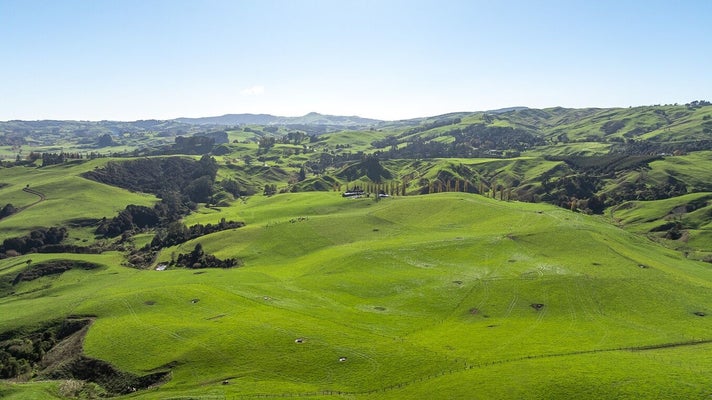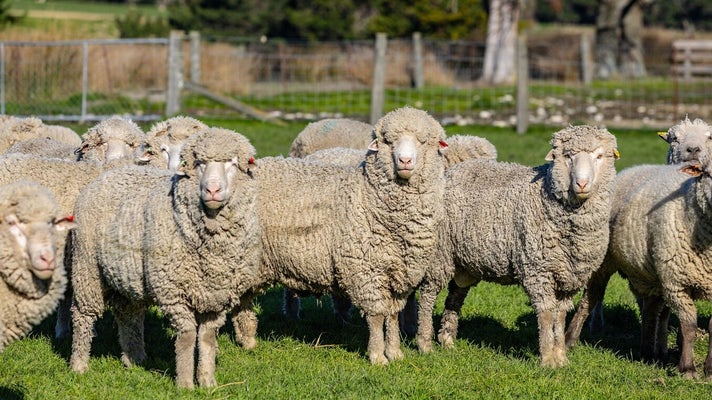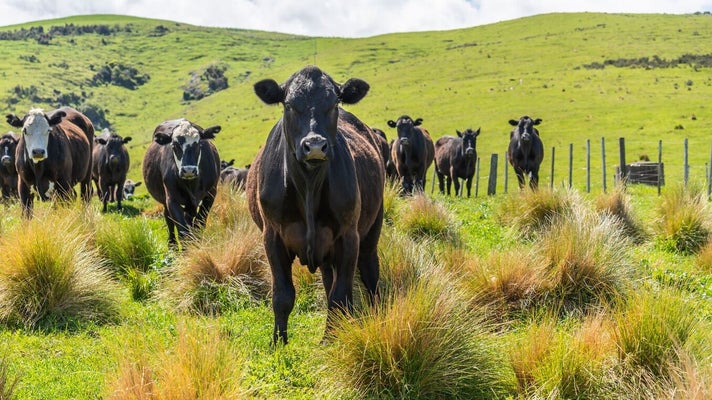Country -
Rural market window is open

Rural landowners considering a sale should act quickly to take advantage of a window of opportunity in the rural real estate market.
Bayleys national director rural Duncan Ross says farming is once again helping to drive New Zealand’s economic recovery.
“The momentum created by the strong surge in farmgate returns, particularly for sheepmeat, beef and dairy, is already creating liquidity across the rural real estate market,” he says.
Ross said farm values are solid and is not expecting to see much significant change to current land values as demand for rural land builds, unless there is scope for a change of land use, for example from irrigated arable land to dairy farming.
However, based on the cyclical nature of commodity markets, opportunities like the one emerging in real estate tend to be relatively short in duration.
“If you’re a farm owner thinking of selling within the next two to five years, then my advice is act while you can capitalise on the liquidity in the current market,” he says.
Leaving the decision to list a property until farmgate returns have peaked or begun to ease is risky.
“Some farmers with shorter exit time frames tend to want to keep farming for longer when farmgate returns rise. But they are often the ones who miss out on finding a buyer for their farm when the liquidity disappears as the commodity cycles start their inevitable decline,” he says.
With the exception of viticulture units, arable land and some specialist horticulture crops, Ross says there are good levels of demand for properties across all sectors of the rural real estate market.
“By and large, the whole sector is in great heart. Farmgate returns are strong and owners are making healthy profits again,” he says.
“Banks are lending at more modest interest rates again and the liquidity in the market is building as farmers, corporates and overseas buyers start to look around for extra scale or that next property,” he says.
Ross says banks are also more ambitious with their lending, adding to the momentum in the market. “As a business, Bayleys is seeing good levels of activity and our team is keen to have the conversations with farm owners, advisers, lawyers, trustees and bankers, about timing for the sale of their properties or growth opportunities.”
Generational shifts
Ross says the impact of a looming bubble of farm sales driven by ownership succession is difficult to predict.
He points to the recent white paper from Rabobank, called Changing of the guard, which highlights the number of farm succession transactions likely to occur within the next decade.
Rabobank New Zealand chief executive officer Todd Charteris says within the next 10 years, New Zealand agriculture will need to manage its largest ever intergenerational transfer of wealth.
Rabobank’s research found that more than half of all New Zealand farm and orchard owners – over 17,000 – will reach the age of 65 within the next decade. At current land values, researchers conservatively estimated this equates to more than $150 billion of farm assets potentially changing hands in that period.
“Succession is not a moment in time. It’s a process that takes years of planning, conversation and adaptation,” Charteris said at the time the report was released in June this year.
“The traditional model of passing the farm to the next generation is under pressure, but there are new and innovative models emerging, such as hybrid ownership and corporate structures, that can help families stay connected to their land.”
The white paper highlighted the lack of planning among farming families when it comes to succession options. Just one in three farm owners have a formal succession plan in place.
Ross says he and his team of rural and lifestyle specialists at Bayleys are acutely aware of the massive number of farming families trying to grapple with passing farm ownership on to the next generation.
“Our team is ready to have ongoing conversations with farm owners trying to find an equitable solution for them and their families.
“Many of our team also have banking and farming experience, which is helpful for finding solutions to some of the tricky issues that come up in a succession discussion,” Ross says.
Getting more farming families to see succession as an opportunity, rather than a challenge, and getting the timing right for any sale of land, is always challenging.
“Farmers are often generational thinkers, but commodity markets are not and they move around within much shorter timeframes. But it is those commodity markets that influence the strength and liquidity of the real estate market, and the support of banks to lend on farm purchases.”
Ross says in succession planning and exit discussions, selling the family farm is often not considered seriously as an option for farming families because of the emotional connection members have to the land.
However, it can be the most appropriate option to achieve the most equitable transition.
“The fundamental issue is that farmers don’t naturally want to sell when there is liquidity in the market. When they start to make money, it feels like this is the time to farm it.
“In fact, they need to think of selling before the commodity cycle changes, to avoid being locked in farming it until the next upswing in the commodity cycle,” he says.

Unprecedented farmgate returns
Farmgate returns for the nation’s beef, sheepmeat and dairy farms have surged to unprecedented levels in the past year as export markets respond to contracting product supply from competing countries.
New Zealand red meat prices are at record levels and are forecast to remain strong throughout the coming year, according to the New Season Outlook for 2025–2026 from Beef + Lamb New Zealand (B+LNZ).
B+LNZ board chair Kate Acland says the outlook is positive, thanks largely to tight global supply keeping demand high.
“Even with tariffs being imposed by the United States, New Zealand is still benefiting from robust international demand, particularly from the US, Europe and the UK.
Despite lower export volumes, earnings for New Zealand’s core red meat exports are expected to rise by $1.4 billion, to $10.5 billion, for the 2024–2025 season (year ending September 30).
Export returns for the coming 2025–26 season are forecast to hold steady, easing by only 0.5 percent compared to 2024–2025. This reflects the strength of global demand and the limited supply of sheep and beef product available worldwide.
The high global prices are flowing through to farmgate returns, with profitability much improved over the past year.
For 2024–2025, B+LNZ reported profitability rebounding from the previous year to $138,600. In the coming season 2025–2026, average farm profit before tax is forecast to increase to $166,500.
Despite the positives, Acland says there are also many global headwinds and significant risks to navigate for the red meat sector.
The 15-percent tariff now applied to all New Zealand exports heading into the US could strip nearly $500 million from red meat sector earnings in a season.
The US lamb industry is also continuing to push strongly for higher tariffs on New Zealand imports, while Chinese authorities are undertaking a safeguard investigation into beef imports.
Other risks include a stronger forecast for the New Zealand dollar, which could eat into export values, and the continued loss of productive New Zealand farmland to carbon forestry.
“Farmers have reason to be optimistic, but also every reason to keep planning carefully, benchmarking performance, and reinvesting in areas that will carry their businesses forward.”
Dairy momentum
The outlook for dairy farmers is for sustained $10/kg-plus milk solid payouts for the next year or more.
Fonterra suppliers will also be banking a tax-free $2/share dividend from the proposed sale of the giant co-op’s consumer brands business to French giant Lactalis for $3.845 billion. The deal is still subject to approvals but has been met with broad support from suppliers.
Confidence in the dairy sector is also a contributing factor behind a number of new conversions, either already consented this year or under investigation, in the Canterbury region.
Canterbury’s regional council, ECan, has reported several consents have been granted since the start of the year.
A consent is no longer required for change in use of land to dairy farming following National Environmental Standards for Freshwater 2020 standards being withdrawn from January 1, 2025. Consents are still required for discharge of dairy effluent and both existing and new dairy farms must hold these consents.
Ross says the jury is still out as to how many will proceed with conversion to dairy farming in the Canterbury region after visiting there recently and meeting with local consultants handling a lot of consenting work. With conversion costs potentially upwards of $20,000/ha on irrigated land already into the mid-$50,000s this could reset land value and ROI thinking.
“But it is an opportunity for those owners with suitable land to get the consent in place to proceed, and lock in the potential increase in land value,” he says.

Confidence builds resilience
Reflecting the improved optimism among the farm sector was the latest six-monthly farm confidence survey run by Federated Farmers released in July, showing a sharp uptick in optimism among farmers in a rebound from record lows only a year earlier.
"Farming families have been through some really tough years recently and that’s weighed heavily on our rural communities," Federated Farmers president Wayne Langford says.
"For the last few seasons, we’ve been farming with sky-high interest rates, rising on-farm costs, fluctuating incomes, and a web of red tape that felt near impossible to navigate.
"It’s great to see our July survey showing many farmers are feeling a whole lot more positive, thanks to better returns, lower interest rates, and easing inflation.
"We’ve also seen a government that’s been willing to work with farmers and scrap some of the most unworkable, impractical rules that were killing the rural economy."
The July Farmer Confidence Survey found perceptions of current economic conditions have risen to their highest level in almost a decade.
Langford says it is important to note that not all farmers are feeling positive. Arable farmers in particular continue to face significant headwinds and challenges.
"Farmers are using the breathing room from lower interest rates and improved profitability to pay down debt and build resilience. That’s smart business," Langford says.
Forestry slowdown
Ross says although the government’s new Climate Change Response (Emissions Trading Scheme—Forestry Conversion) Amendment Bill was panned by Federated Farmers for not going far enough to stop wholesale farmland conversions to carbon forestry, Ross says its intention to restrict tree planting has already been felt.
The bill aims to balance agricultural and forestry interests, reducing conversions of productive land while allowing up to 25 percent of it to be used for exotic forestry per farm.
“There has been a surge in sales in the past few months from buyers looking for land to plant ahead of the new legislation coming into effect later this year, but that will be short lived and the availability of land for planting will be restricted in the future,” he says.
In some instances, Ross says switching a portion of a farm from livestock farming to forestry or carbon farming, could provide a useful succession option in the future.
“So, leaving the door open to that option is important for farmers navigating through the development of their succession plan.”
With an election year looming, and the wider New Zealand economy slow to recover, Ross is not expecting any significant uplift in interest from city-based investors in rural land in the coming year or more.
“However, while we’re already seeing strong competition from existing corporate businesses with rural investments and large-scale family-owned companies looking to expand, I’m not expecting much new interest to flow into the rural market from the so-called Queen Street investor pool.
“Any new investor group or company will be looking for stability in the wider economy first, and with an election coming up in a year or so, there will be some nervousness to move too quickly,” he says.
However, the inverse may be true as farmers with free cash, excess equity positions and a potential Fonterra share dividend windfall look to diversity their investment portfolios into other asset classes or the family bach.